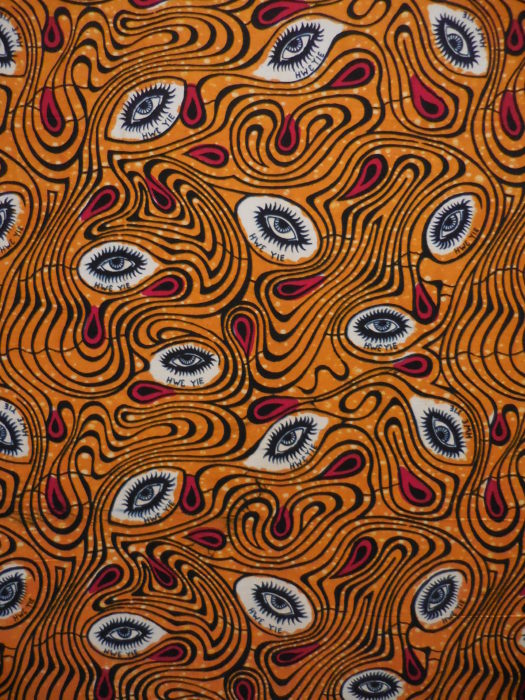
Contemporary wax printed textiles stretched onto frames—I’m guessing 24″ x 36″— like art: as stunning as the fashions in the Creative Africa exhibit currently at the Philadelphia Museum of Art’s Perlman annex. Did you catch my blog post about that? you can look at it here.
The comments are really interesting, as comments always are! The print below, though it seems to belittle conversation and communication, nonetheless speaks to the way all us quilters silently express ourselves through cloth:
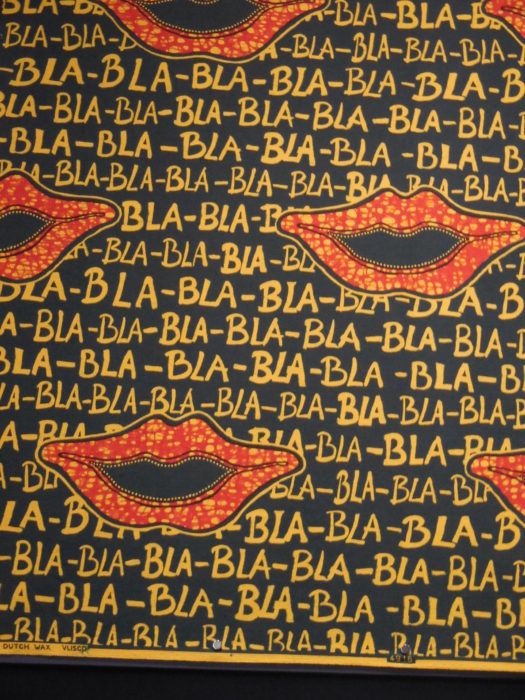
Although most people think of them as African, the fabrics are designed by Dutch designers and made in the Netherlands by Vlisco. Still, they are inspired by African motifs and symbols, and made into clothing and worn mostly by Africans. Here’s a photo from the collection of African architect Francis Kéré, also shown in the PMA exhibit:
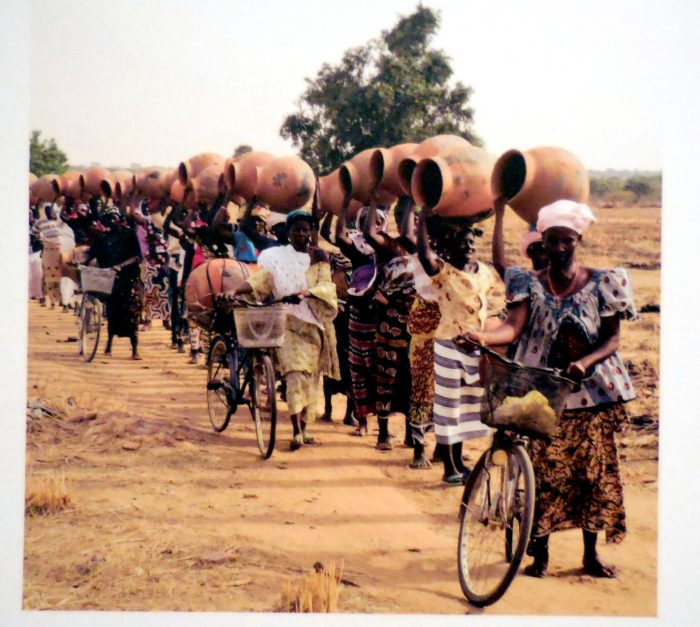
Clearly, the fabric you wear is an important way of expressing who you are. And your position in society. Here, the reference is to bolts of fabric included in an African woman’s dowry.
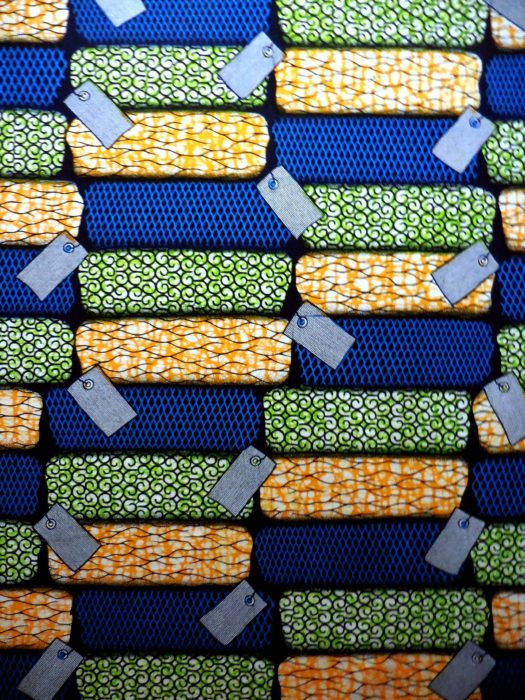
I naturally gravitated toward other motifs related to cutting and stitching:
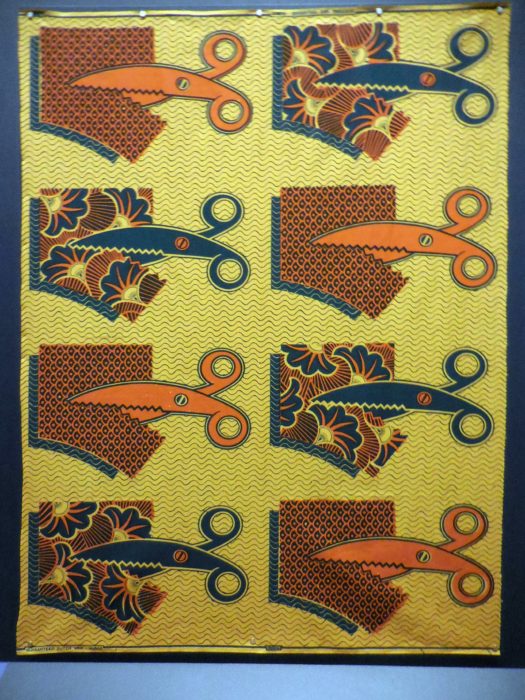
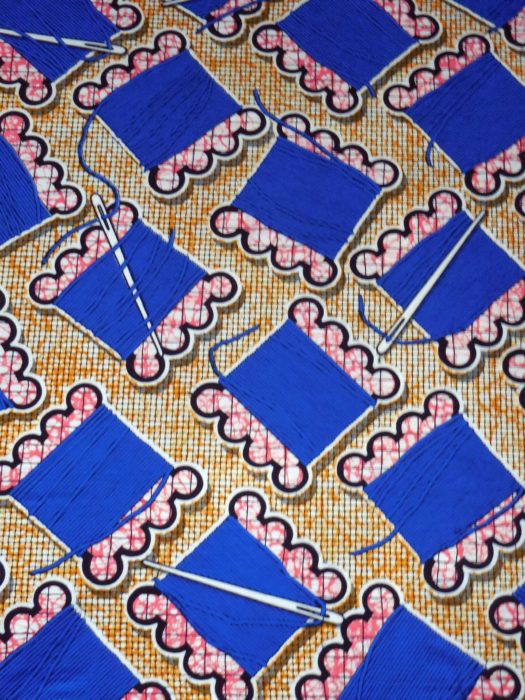
Symbols of upwardly mobile wealth, especially for women in the market and on the go, also take the forms of fancy shoes, wheels, and cars.
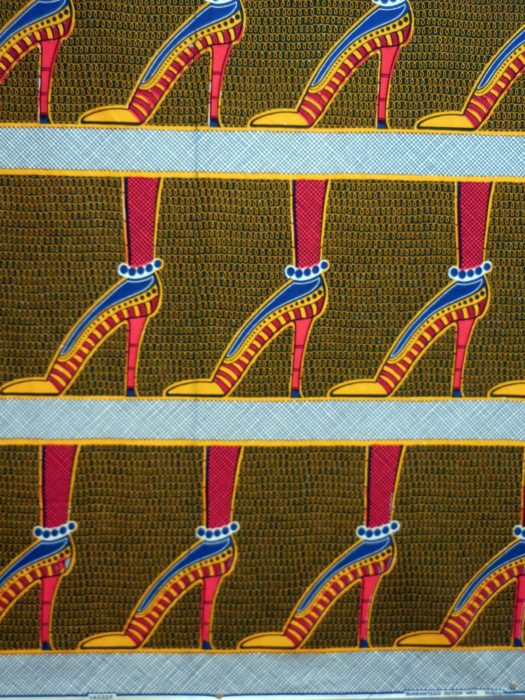
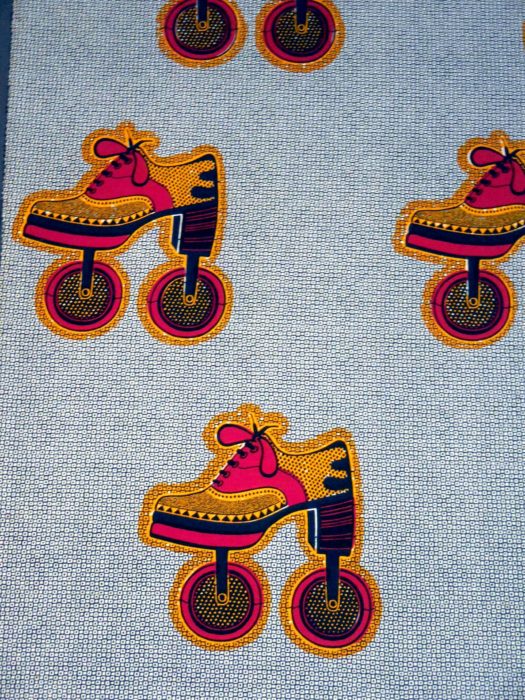
On the grill of a luxury car, the Vlisco logo takes over for Mercedes Benz.
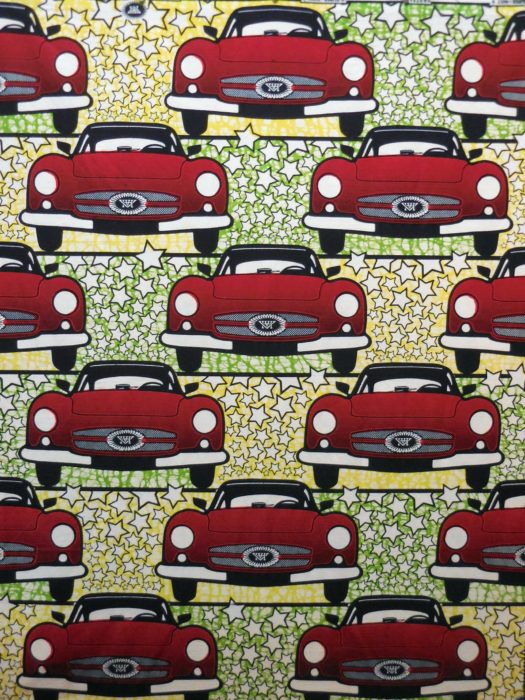
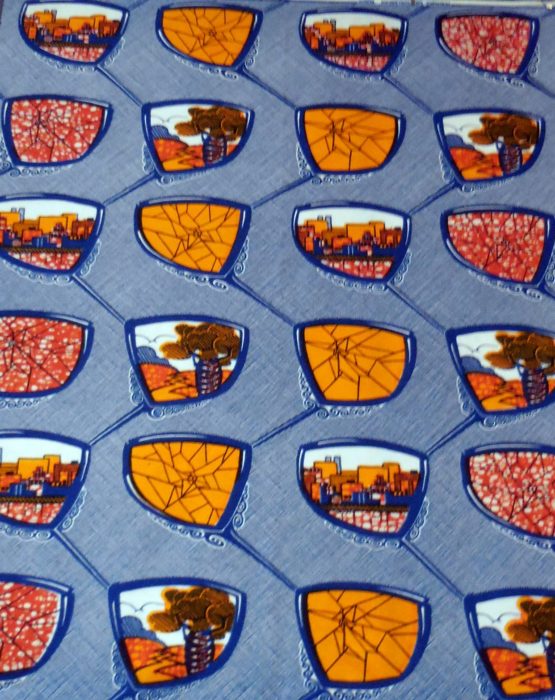
Think those cracks in the side mirrors of a Mercedes refer to our warped perceptions of where we’ve come from, i.e., our humble beginnings? Or literally to the batik process of breaking up the wax painted on the fabric so dyes can seep into the cracks?
Another traffic-related print poses the question, are you heading towards love or money?
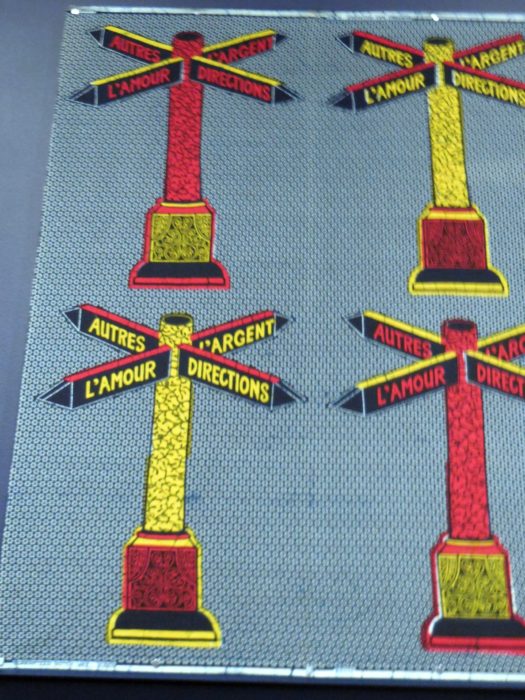
Perhaps the most “out-there” fabric from 1953 features a traditional patchwork design around a sort of fertility mandala, shall I say? It’s named after an African proverb that translates to “children are better than money.”
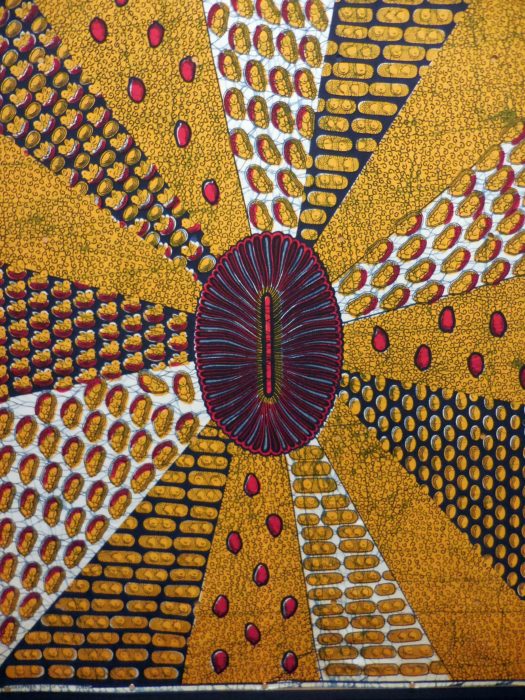
Stay tuned. My next post will show some distinctly African-made fabrics. In the meantime, how do YOU use conversation prints in your work?

